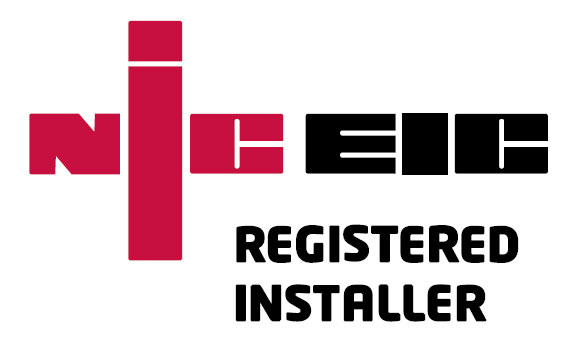It’s easy to fit a coil to an MVHR and then call it cooling, but if it only gives you 2kW of cooling potential when you have 4kW of unwanted heating, you’re still going to overheat just not as quickly. It might help with your TM59 calcs but it certainly won’t keep you cool on a hot day.
If you’re looking for something that resembles Air Conditioning, only quieter, more energy efficient, and everywhere instead of isolated rooms, a cooling coil is only part of the solution. Besides the temperature and flow rate of the water inside the coil, it’s the amount of air you move over the coil that makes the difference. And it’s moving more air quietly and efficiently that costs the money. You effectively need a bigger MVHR system.
Traditional Air Conditioning is getting phased out for environmental reasons. If 1kg of F-gas leaks it can be equivalent to 2,000kg of CO2. Instead, the future is water-based cooling generated by a reversible heat pump, and then delivered through the MVHR. And if you need water heating and air cooling at the same time, you also need a Building Management System to control things.
To meet the minimum background ventilation rate in a domestic property you need to replace all the air inside the property every 2.5 hours. Or to put it technically, your MVHR must achieve 0.4 Air Changes per Hour (ACH). But if you want to cool the building too you need a lot more air movement. More than double, or at least 1.0 ACH to be precise. Any less and it’s like trying to cool a sauna with an ice cube.
To achieve that amount of air movement you need more pipes, bigger pipes, and normally a more capable machine. You also need to insulate all the supply pipes so the air stays chilled until it reaches the rooms you’re trying to cool. The duct lagging also prevents condensation problems when warm air tries to evaporate on what is a cold surface.
You can’t add more ducting or lag pipes after the plasterboard goes up, even if you can add a coil and a larger machine, so for that reason MVHR cooling is impossible to retrofit later. It’s now or never.
Note: Under building regulations AC doesn’t qualify as ventilation, so if you want it you’ll need MVHR too. And because one system moves considerably more air than the other, when you have both in the same space the ventilation can be compromised.
Before you plan any active cooling for the property you should start with a passive cooling strategy. Something to prevent the heat getting in so you don’t have to pay to take it out. Simple interventions like heat reflecting underlay, solar control glazing, exterior shading and/or exterior blinds, better insulation etc. Prevention is better than cure and certainly less expensive.
Since the introduction of Part-O in June 2022 your Principal Designer is responsible for assessing and then mitigating overheating risks, either through a ‘simplified assessment method’ or ideally proper TM59 thermal modelling, because that’s the only way you’ll know for sure. Given the solutions affect your glass design/specification, the amount of air movement required, and the insulation U-values, you’d be wise to check for issues before you finish designing the property. Discovering Part-O problems when you’re already on site is not a good place to be.
The temperature readings opposite are taken from the data logger built into the Airflow Adroit DV245. The property has 312m2 internal floor area over three levels, with only 10% glass on the West elevation and 7% on the South. Circa 10kW of cooling energy is provided by the Ground Source Heat Pump and delivered via the3 MVHR to each floor, on demand. All temperature controls are managed by the Building Management System. The data was recorded on the hottest June day on record with an ambient outdoor temperature of 34 degrees centigrade.
The cooling coils combined with the (free) cool air recovery function are supplying air to the dwelling at 16oC. Without MVHR cooling the supply air would be 34oC, i.e. the same as the ambient outdoor temperature. Supplying the correct amount of air at this temperature (elevated to 1.0ACH) is sufficient to reduce the average indoor temperature down to 23oC. Some rooms will be slightly cooler while others, those with glass facing South or West, will be slightly hotter. But the entire building is kept a much more comfortable temperature, and the system is both quieter and a lot more energy efficient than traditional Air Conditioning.





